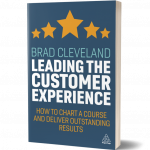The idea of empowering employees to be customer advocates sounds great to many leaders—in concept. But doing so is easier said than done if barriers are in place. These can include lack of training, misguided performance targets, limited decision-making authority and others. There are five components that are essential to turn developing employees into customer advocates.
Philosophy. One is to have and reinforce a vision that defines what focusing on customers means. USAA, the insurance and financial company consistently rated among top organizations for customer service, operates by the mantra, “We know what it means to serve.” That simple statement helps guide every decision. Wyndham’s mission is another good example: “Make hotel travel available to all.”

Training and coaching. A second essential component is to instill a deep understanding of what customer advocacy is, and how it works, in your organization. This has to be practical for every employee and every job role.
For example, address questions such as:
- What does it mean to put yourself in customers’ shoes?
- How do you find the best solutions for them?
- To whom do you reach out when resources and assistance from other areas are required?
Training and coaching for every role and in every department should cover these issues—operations, marketing, the warehouse, and yes, even areas many don’t think of as customer-related such as accounting.
Authority. Customer advocacy is about taking action to do what’s best for customers. You can’t expect employees to be effective unless they have the authority and means to make decisions.
For years, Ritz-Carlton has given staff $2,000 of discretion, per employee and per guest, to resolve problems as the employee feels is appropriate. As a senior manager explains, “Sometimes the most delightful ‘wow’ moments happen in the blink of an eye. If employees are not empowered and need to cross layers of approval, these moments could be lost forever.”
Many executives are, at least initially, concerned with this level of empowerment. But I’ve seen the cost of adjustments go down and customer satisfaction go up when decisions are quick and happen through the employee directly involved. Employees appreciate the trust. And customers notice—immediate decisions are impressive. The key is to have clear quality standards and values that lead to good decisions.
Goals and objectives. The right goals and objectives—ones that support and encourage customer advocacy—are also essential. When you establish metrics, you’ll get what you measure.
Tools and processes. You’ll also need supporting tools and processes. This does not necessarily mean you have to have the latest technology, but several capabilities are especially helpful. These include knowing the customer’s history and preferences, the means to capture helpful information on customers and issues, and good communication tools for internal collaboration.
Customer advocacy doesn’t happen on its own. But if you’ve aligned these five components, you’ll be strongly on track to developing employees into customer advocates.

Excerpt from Leading the Customer Experience: How to Chart a Course and Deliver Outstanding Results by Brad Cleveland.



0 Comments